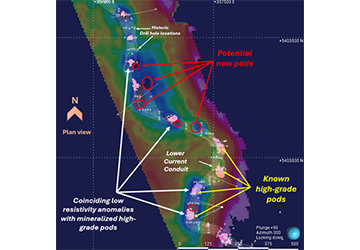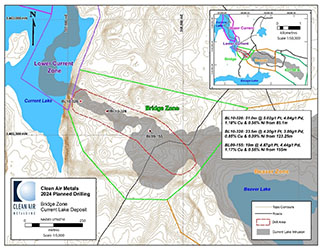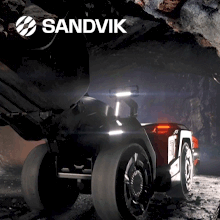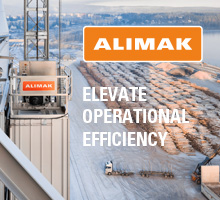Clean Air Metals Identifies New High-Grade Targets at Thunder Bay North

Clean Air Metals Inc. has identified new high-grade mineralization targets through its recent re-modelling of historical geophysical survey data at the Thunder Bay North Project. Using Resistivity Depth Imaging (RDI) on past Versatile Time Domain Electromagnetic (VTEM) survey data, the company outlined shallow, low-resistivity anomalies within the Current deposit, which appear to correlate with known high-grade pods and indicate the presence of additional, largely untested targets. This approach aims to refine the company's understanding of the site and optimize exploration by using alternative data analysis methods.
Results from Clean Air Metals’ recent drilling program at the Current deposit highlights the potential for resource expansion, as demonstrated by high-grade intersections reported earlier this year. The company has announced plans for a follow-up drill program by year-end, supported by expanded 3D resistivity modelling of both the Current and Escape deposits, which will further delineate mineralized zones and guide targeted drilling aimed at identifying new high-grade pods.
“The new resistivity-depth modeling is accurately mapping out the location of the known high-grade zones at Current. It also reveals flanking anomalies, presently undrilled, that are likely to represent additional high-grade pods or extensions to known pods. This methodology will be prioritized for guiding additional drilling at both Current and Escape as we continue to delineate the critical high-grade resources needed to support a lower-risk, higher-margin underground mining scenario for the project.” said Lionnel Djon, Clean Air Metals' VP of Exploration.
For more information
Categories: Exploration Equipment Exploration Services
2024-11-06 | Clean Air Metals Inc | Canada | Views 35













